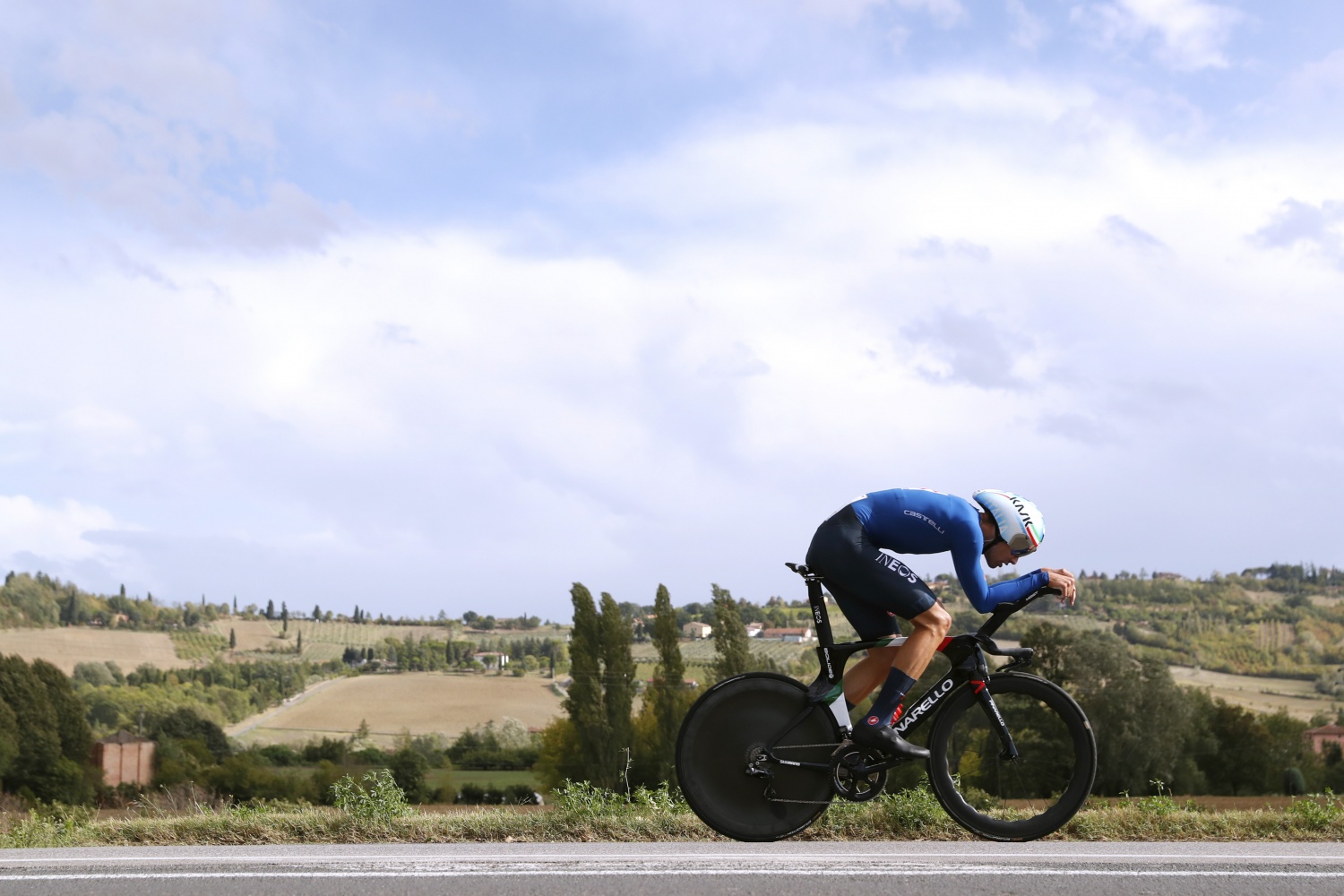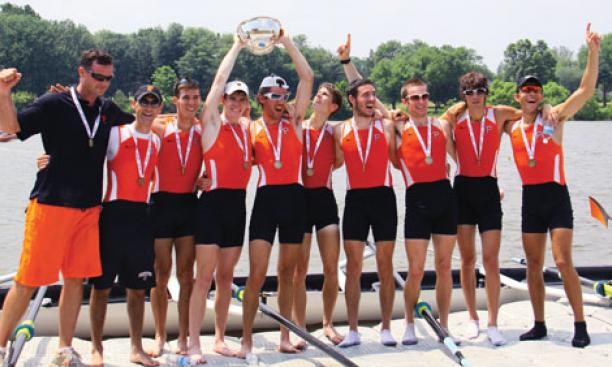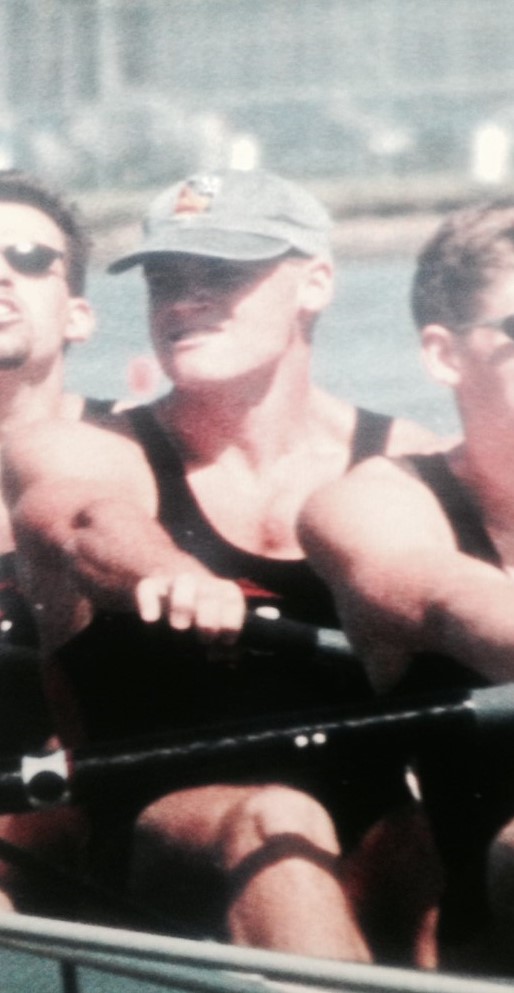A Conversation With Marty Crotty, Founder Of Princeton Carbonworks
We visit with Marty Crotty, Founder of Princeton Carbonworks and learn about PCW’s quest to build a better wheel, their background,and their relationship with Team Ineos.
Princeton wheels came to our attention last season when we saw them being used by Team Ineos in the World Tour . The wheels looked slightly different, which made us even more curious. Having raced on dozens of types of wheels, during my racing career, I am aware of how twitchy an aero wheel can be in the wind, especially when riding with aero TT handlebars. The profile of the rims is unique which immediately made me wonder if the Princeton wheels were more stable. Now that we have them in the shop, we can say they are both extremely well built and ride well.
Marty, thanks for taking the time to chat with us. Princeton Carbonworks is based in Princeton NJ, where you went to university with your business partners. Before your time at Princeton, were you a cyclist?
Before Princeton, I was never a competitive cyclist. There wasn’t much competitive cycling available in Western New York.
Where did you grow up?
I grew up in Hamburg, NY, a suburb of Buffalo, in the Western part of the State.
I read you were a Division 1 rower for the Princeton crew. Can you tell us about your racing career? Was cycling a sport you did for cross training?
I did row for Princeton from 1994-1998. During my time there the team was pretty successful, which was a huge bonus. We won the National Championship in the freshman eight in 1995, and the varsity eight in 1996 and 1998. But, the overall experience of being in the shape of my life and competing at the very top of a sport was special.
Between school and full time training for rowing, we didn’t have much time to cross train. Most of my summers were spent training for the various National Team events. Just more rowing!
I didn’t start cycling until the week after the 2000 Olympic Trials, when after a pretty dismal performance I was looking for a way to get as far away from rowing as possible. Being on a bike and riding far out into the countryside seemed like a good way to do that.
Perhaps you could tell us about the origins of Princeton Carbonworks, the team, how you came together to work on this project and your mission.
2000-2011, lots happened in there, most of it involved me turning into a rowing coach and ending up back in Princeton. I had also started doing triathlon pretty seriously and was just back from 70.3 World Champs (not pro level, just age grouper) in Vegas in 2011. In Vegas it became clear that I needed some equipment upgrades, so I started to figure out ways I was going to make that happen. The next part definitely involves the next question so, see below………
The Princeton Carbonworks Team: Harrison Macris, Brad Werntz, Richard Furchtgott and Mary Crotty.
Like most modern high performance sports’ equipment, rowing skulls and oars are made out of carbon fiber and teams of engineers are constantly tweaking the design to improve their speed in the water and gain an advantage on the competition. Are there any technological ideas that you transferred from carbon boat design to carbon wheels?
Exactly. A number of things came together here. As a coach at Princeton I had contacts with some major carbon composite manufacturers–the guys who made all of our boats, oars, seats, etc. One of them happened to be my brother, who was the President of a boat company. I planted the seed with him about designing and making our own carbon bike wheels, and whether his company could do it out of their existing manufacturing facilities.
Fast forward a year (business plan definitely was getting dusty!), and I got a call from my brother’s boss’ boss who was very interested, and wanted to arrange a meeting with my “team of engineers at Princeton” to talk about what we were developing. Well, I needed to assemble a team of engineers quickly. Thank goodness I had access to some of the most brilliant mechanical aerospace engineers in the world…..at the Princeton boathouse. I called the smartest guy I had ever coached at Princeton, Brad Werntz, told him about what was developing, and that I needed him to design a wheel, any wheel, and join me on this conference call to represent our engineering team.
Brad brought in Harrison Macris, our current CEO, who is particularly good at turning ideas and design into computer files via Solid Works. Harrison and Brad pulled a couple of all nighters and by the spring of 2013 the original PCW Co-Founders were a team, and we had our variable rim depth, sinusoidal shape design.
Michael, my husband, spent three years of his racing career at Team Sky, which is now Team Ineos. He enjoyed his time there and learned a lot over that period due to the team’s ongoing study of cycling performance. Most impressive was the team’s interest in analyzing every variable, even the most minute. They hired teams of specialists from many sports and diverse industries to gain knowledge. Countless hours of study went into designing better parts, faster bikes, better team vehicles, the correct nutrition etc. The team worked closely with their sponsors to improve the products, and if products weren’t good enough they simply purchased what they believed was better. Team Ineos started racing on Princeton Carbonworks wheels (logos removed) last year, which is a testament to the wheel design. They were ridden at the Tour de France, Giro d’Italia and Filippo Ganna won his World Championship time trial gold medal while riding them. Most recently, in the time trial last week at the Tour des Alpes Maritimes et du Var, Ganna won using a Princeton Carbonworks front wheel. How did this relationship come about?
In 2017, I was watching the live stream of Ironman Worlds in Kona and for about three hours of it, this former lightweight rower from Tasmania, Cam Wurf, was leading the race. I took note of the Frankenstein type arrangement he had on his bike–especially the mismatched wheels. (Not knocking the set up, Cam went on to smash the bike course record by 8 minutes that day, but the point is that he clearly wasn’t sponsored). As the Founder of a bicycle wheel company, and the Head Lightweight Rowing coach at Princeton, I figured I’d reach out. My mentor and former collegiate coach at Princeton, Curtis Jordan, has spent some time coaching the Australian National Team in 2010-2013 so I put him to work and within hours, through one of Cam’s best mates, Ali Foot, I was in touch.
Marty and Cam testing wheels
Cam started using the wheels in training, then eventually in some races, then full time. Who knew his coach Tim Kerrison, also a former rowing coach, would bring Cam under Team Sky, and eventually sign him to Team INEOS full time? From there, we still had to get wheels in front of the decision makers at Sky, which we finally did in April of 2019.
As you said, nothing like Team Sky testing protocol to make sure you’ve got your act together! At the 2019 Worlds ITT we were on Eddie Dunbar, Dylan van Baarle, and Filippo Ganna’s bikes and were pretty excited about Ganna’s bronze medal performance.
Filippo Ganna on his way to winning the World Championships Time Trail in Imola, Italy on Princeton Carbonworks wheels.
Ineos is the last of the World Tour teams to use rim brakes. Have you studied how wheels with disc brakes handle in the wind in comparison to rim brake wheels?
You’ve got to take into account everything that goes into a disc brake wheel system vs a rim brake wheel system. Disc brake wheels, together with 24 spokes and a larger front hub, are slower than rim brake wheels (with their smaller front hub and only 16 spokes).
And rim brake calipers versus the rotor you need for disc brake, and the cost of calipers is less than the side force and drag from the rotor.
These are the results that we have gotten with our own testing. I want to be clear that INEOS does not share any of the testing they do with us or with anybody. So, you’d have to ask them
Deep section rims become sails in a crosswind, and also make the bike feel twitchy even with a slight gust. On several occasions we’ve seen riders blown off the road into the ditch in a strong wind, and this is likely what caused Chris Froome’s horrific crash a few years ago. Smaller, lighter, riders often can’t use them as a result. The Princeton wheels are incredibly stable and fast in strong crosswinds. In your quest to create a more stable wheel, what did you focus on in the design?
NERD ALERT: (I’ll try to keep it brief without appearing like I am dodging….)
Our main focus was the sinusoidal shape, and then whether a manufacturer could mould carbon this way. Lots of hurdles there.
The aim of the sinusoidal shape is the reduction of vortex shedding, a phenomenon which occurs when air travels across a bluff, creating alternating low pressure zones behind the object (in the case of a bicycle wheel, the object is the tire and the leading edge of the rotating rim). The larger those vortices are, the more instability you’re going to feel.
By moulding our rims into a shape with 24 oscillating sinusoids, we are streamlining the air flow, allowing the spokes, hub, trailing edge of the front wheels, as well the frame, rider’s legs and feet, and rear wheel system to flow through the air with less drag and more stability.
As it relates to aerodynamics and stability, we definitely nailed this.
As a BIG bonus, in addition to nailing the stability and aerodynamics of the rim, we immediately saw with the very first prototypes that the rims were incredibly strong, stiff, and therefore responsive. This was gratifying because you don’t need a wind tunnel to verify this, you just have to ride to the end of your street and back.
In designing and building your business, what products, businesses, books and / or people inspire you most and why?
A couple that come to mind, as we’ve moved this thing along are “Start at the End” and “Shoe Dog.” Funny, there are two separate books named “Start at the End” which I’ve read and re-read over the years. The first is a business plan development type book. The second is more of a product development type book that delves into the psychology of consumers.
“Shoe Dog” is the autobiography of Phil Knight, CEO Emeritus of Nike. I won’t ruin it for you, but what a fascinating story. A guy with an iteration of a simple product, with the vision to change the athletic experience of everyone who slips it on their foot.
Inspiration is not hard to find. I’m inspired most by the high performance athletes I’m surrounded by every day. The way they train, the way they suffer, in order to make themselves better. But, I haven’t been in close contact with all of the athletes I coach at Princeton since March 2020,
Also very lucky, I’ve been able to fill that void with pro cycling in the Fall of 2020, and getting daily feedback from our customers about how much they’re loving our wheels. Hearing stories about people riding more, going faster, feeling better about themselves, since they put our wheels on their bike, is the most satisfying thing I can hear.
What do you do for fitness/sports now? Do you still row? Ride bikes?
I ride outdoors almost every day. I still knock around triathlons 1-2 per year. But, I simply ride outdoors 90% of the time, The other 10% is running, more and more slowly lately. I think my running days are over. I just love the bike too much and exhaust all available time doing that.
Beyond bikes and boats do you have any other hobbies?
I golf occasionally, and together with my neighbors we built a 9-hole Par 3 golf course on our property during the pandemic. We live out on an old farm on the outskirts of Princeton so we had the space. It’s been a great way to bond with the neighbors and a great way to spend Happy Hour while socially distancing.
What’s the best book you’ve read lately?
“Mountains According to G” is a real page turner! That’s what I’m reading now. I’m 100% non-fiction, and not just sports books. I love military history and stories of perseverance.
Thanks for your time and insight. Hopefully we can all get out on a ride together at some point before too long.






Very interesting. I was pleased to here about the rim versus disc brakes controversy. As an old guy, who started of with GB courieur side pulls, I have gone through Weinman side pulls, Mafac, centre pulls, Altenberger, and Campagnolo Chorus, and Campagnolo Veloce Monoplaner. Rims have been Mavic, Fiamme, Weinman, and Ambrosio, It is aways interesting to read about the developement of the bicycle. My Great Grandfather, made his own bicycles in 1888.
I love cycling but it’s impossible for me to ride a bike almost every day. I like his cycling style.